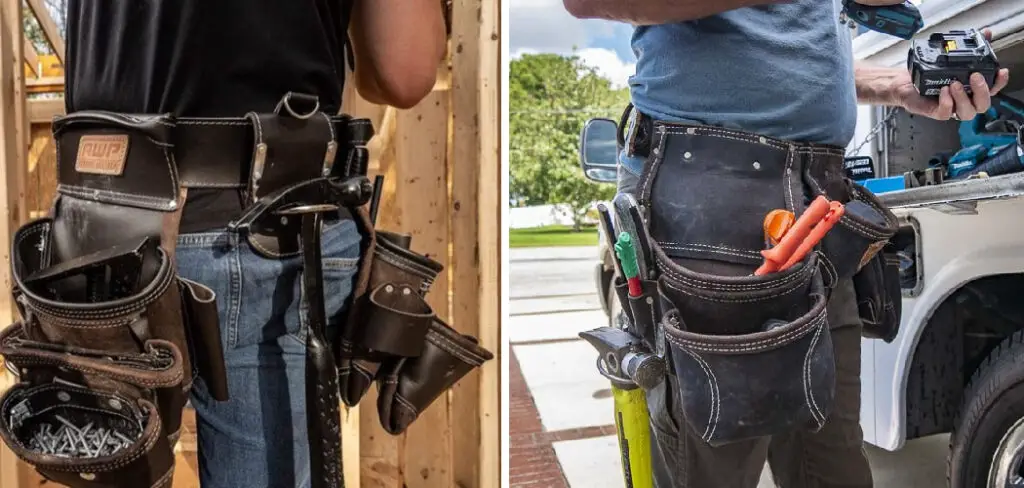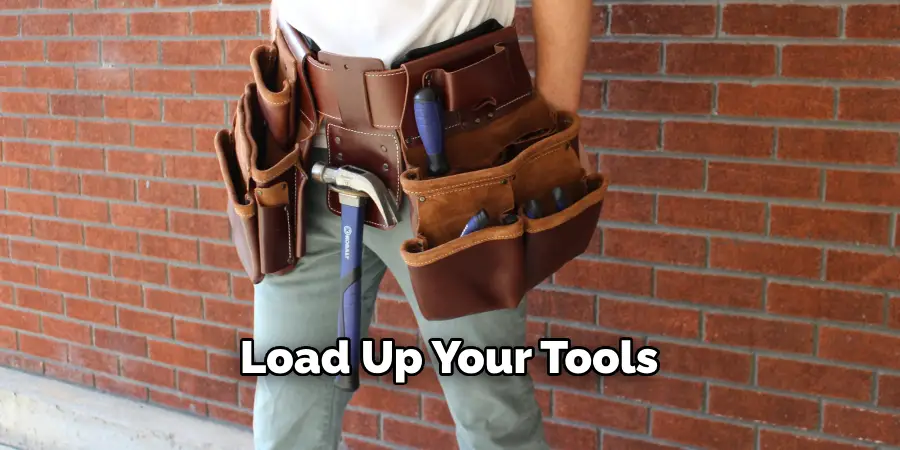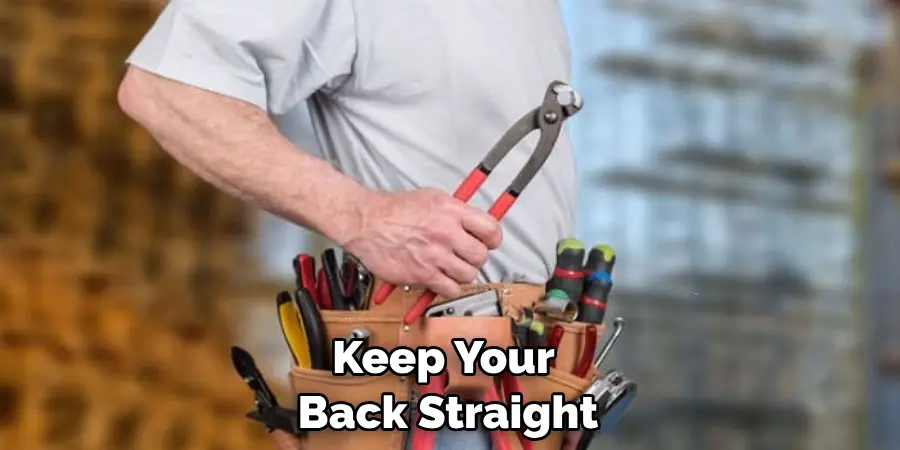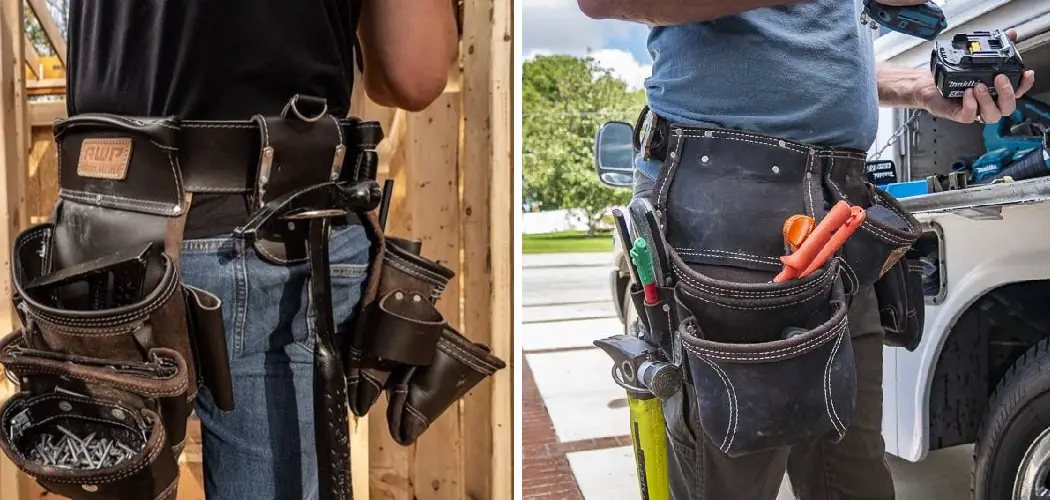Wearing a tool belt is essential to any handyman’s or tradesperson’s wardrobe. It allows you to carry tools and supplies safely and comfortably without having to stop in the middle of your work to search for what you need.

A properly-worn tool belt also improves posture when carrying heavy objects, helping to prevent back strain and injury. Knowing how to wear a tool belt properly is an important skill for anyone who works with tools on a regular basis.
One of the main advantages of wearing a tool belt is that it makes it easier to carry your tools around. By having them strapped to your body, you don’t need to worry about dropping or misplacing them as you work.
And since tool belts come in different sizes, designs, and fabrics, you can choose one that best suits your needs. This also makes it easier to access certain tools quickly in an emergency situation. In this blog post, You will learn in detail how to wear a tool belt.
Step-by-Step Processes for How to Wear a Tool Belt
Step 1: Inspect Your Tool Belt
Before you start wearing your tool belt, it’s important to inspect it for any loose parts or damage. This can help ensure that the belt will stay securely and comfortably on your waist throughout the day. Start by threading the adjustable strap through the belt loops of your trousers or work pants. Then, attach the buckle and tighten it until it’s snug around your waist.
Step 2: Check for Comfortability
Ensure the belt is not too loose or tight so you can move freely while working. If needed, you can adjust the strap to make sure the tool belt is comfortable for you to wear. Most tool belts come with a variety of pockets, holders, and attachments.
Start by attaching the pockets to the belt and adjusting them so that everything is within easy reach. You should also take this time to make sure any tools you plan on carrying fit snugly in their designated slots.
Step 3: Load Up Your Tools
Now it’s time to load up your tools. Place your most frequently used items in the pockets or holders closest to you for easy access. Then, place heavier items like power tools in the compartments on the back of the tool belt or in a separate bag attached to your belt. Before putting on your tool belt, you should secure any tools that could be a potential hazard to yourself or others. This includes sharp knives, hammers, and other heavy objects.

Step 4: Wear Suspenders For Added Support
If you’ll be carrying more than 10 pounds of tools, wearing a pair of suspenders with your tool belt is a good idea. This will help evenly distribute the weight of your tools and provide additional support while you work. The tool belt should be placed low on the hips to avoid interfering with natural movements. This will also help keep the belt in place and prevent it from sliding down while you work.
Step 5: Secure Your Tool Belt
Once everything is in place, you should check to make sure your tool belt is securely fastened. You may want to use a locking buckle or a separate piece of securing fabric for extra security. The last step is to keep your tools organized and in their proper place. This will help you save time when looking for the right tool for the job.
Safety Tips/ Precautions for How to Wear a Tool Belt
- Select the right size belt for your body type. It should be snug enough that it won’t slip during activities but not so tight that it restricts movement or causes discomfort.
- Ensure all tool pockets and loops are securely fastened before putting on the belt to prevent injury from items slipping out of pockets while working.
- Distribute the weight of tools evenly throughout your body to prevent strain on one side. If there are too many tools or items in one pocket, move them to another pocket to balance out the weight.
- Wear the belt as low as possible, just above your hips and below your waistline, for maximum comfort and balance.
- Keep your back straight, hold your core tight, and try to stay relaxed when wearing a tool belt for extended periods of time. Move around frequently and take breaks to avoid fatigue or injury.
- Be mindful of sharp edges on tools that could tear fabric pockets or loops and cause skin abrasions if left exposed.
- Ensure the belt is secured properly before beginning any task requiring you to be suspended or climb up high. Wearing a tool belt while climbing can cause falls and serious injury if not done correctly.

By following these safety tips, you can safely wear your tool belt for extended periods without any discomfort or injury.
Is There Any Special Care or Maintenance That You Should Do for Your Tool Belt?
The most important thing you can do to ensure your tool belt will last is keep it clean and free of debris or dirt. After each use, empty out your pockets and brush off any dirt or sawdust from the fabric. You should also check for signs of wear and tear, such as frayed straps or loose buckles, and repair or replace them if needed.
Let your tool belt air out after each use to avoid mold or mildew buildup if possible. Finally, store your tool belt in a dry, dark place when not in use. By following these tips, you can help extend the life of your tool belt and keep it looking great for years to come.
How Can You Prevent Back Strain While Wearing a Tool Belt for Extended Periods of Time?
Wearing a tool belt for extended periods of time can be exhausting on the body, especially your back. To prevent and reduce strain on your back while wearing a tool belt, here are some tips to follow:
- Make sure that the tool belt is properly fitted to your waist size. A proper fit will evenly distribute the weight of the tools, which will reduce pressure on your back.
- Look for a belt that is lightweight and made from breathable materials. This will help keep you cool and comfortable while wearing it for long periods.
- Don’t overfill your tool belt with too many items. Carrying too much weight will cause more strain on your back.
- Alternate which side you wear the tool belt on. This will help to reduce and prevent the development of shoulder or back pain from repetition.
- Take regular breaks throughout the day, even if it’s just for a few minutes. Give yourself time to stretch and move your body so that your muscles don’t become too tight.
- Use the appropriate tools and techniques for the job. Doing tasks in an ergonomically correct way will help to reduce strain and fatigue on your body.

Following these tips can help prevent back strain while wearing a tool belt for extended periods, allowing you to work comfortably and efficiently.
Are There Any Environmental Considerations When Using a Tool Belt in Certain Conditions?
When you wear a tool belt while on the job, it’s important to consider the environment around you. Depending on your work type, there may be special considerations when wearing a tool belt in certain conditions. For example, if you are working in an area with extreme temperatures or hazardous materials, taking extra precautions to protect yourself and your equipment is a must.
Additionally, if you are working in an area with high levels of dust or moisture, you should take extra steps to ensure that your tool belt does not become damaged or contaminated by these conditions.

Planning ahead can help minimize risks and increase safety when using a tool belt in any environment. Finally, it’s important to make sure that your tool belt is securely fastened when you are working. Loose or ill-fitting tool belts can be a major safety hazard and may cause injury if they slip off or come apart during use.
Conclusion
In conclusion, wearing a tool belt is essential for any DIY or professional project. Not only does it help you keep all of your tools organized and easily accessible, but also helps to distribute weight more evenly so you don’t become fatigued quickly. When choosing a tool belt, make sure that it fits snugly around the waist and can hold enough tools to suit your needs.
Make sure to adjust the tool belt periodically so it continues to fit correctly and won’t cause any discomfort. Finally, be aware of proper posture and avoid slouching when carrying the tools in your belt for long periods of time. I hope this article has been beneficial for learning how to wear a tool belt. Make Sure the precautionary measures are followed chronologically.

